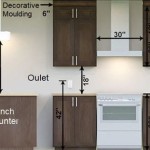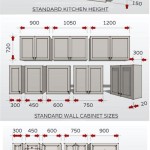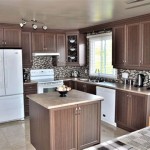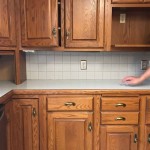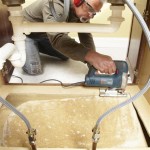Reclaimed Wood Kitchen Cabinet Doors: A Sustainable and Stylish Choice
Reclaimed wood kitchen cabinet doors are gaining popularity as homeowners increasingly seek sustainable and aesthetically unique options for their kitchen renovations. This trend reflects a growing awareness of environmental concerns and a desire to incorporate character and history into modern living spaces. Reclaimed wood, sourced from old buildings, barns, and other structures, offers a compelling alternative to newly manufactured materials, bringing with it a distinct visual appeal and a reduced environmental footprint.
The decision to use reclaimed wood for kitchen cabinet doors involves considering various factors, including the type of wood, its sourcing, and the desired aesthetic. The process of transforming reclaimed wood into functional cabinet doors requires careful preparation, craftsmanship, and an understanding of the material's unique properties. This article explores the advantages, considerations, and processes involved in utilizing reclaimed wood for kitchen cabinet door projects.
The Appeal of Reclaimed Wood: Sustainability and Character
One of the primary drivers behind the use of reclaimed wood is its sustainability. By repurposing existing wood, homeowners reduce the demand for newly harvested timber, mitigating deforestation and its associated environmental consequences. Forests play a critical role in carbon sequestration, climate regulation, and biodiversity conservation. Reducing logging helps preserve these vital ecosystems and contributes to a more sustainable environment.
Furthermore, the transportation and processing of new lumber require significant energy inputs, contributing to greenhouse gas emissions. Reclaimed wood, on the other hand, often involves shorter transportation distances and less energy-intensive processing, resulting in a lower carbon footprint. Choosing reclaimed wood is, therefore, a tangible way to minimize the environmental impact of a kitchen renovation project.
Beyond its environmental benefits, reclaimed wood offers a unique aesthetic appeal. Each piece of reclaimed wood tells a story, bearing the marks of its previous life. Nail holes, saw marks, weathering, and variations in grain patterns contribute to a character that cannot be replicated with new wood. This inherent character adds warmth, depth, and a sense of history to a kitchen, creating a space that feels both authentic and inviting.
The visual imperfections that are considered desirable in reclaimed wood are often seen as flaws in newly manufactured materials. This acceptance of imperfection is part of the growing trend towards embracing natural materials and celebrating the beauty of imperfections. Reclaimed wood cabinet doors can serve as a focal point in a kitchen, adding a touch of rustic charm or complementing a more modern design aesthetic.
Sourcing and Preparation of Reclaimed Wood for Cabinet Doors
The process of sourcing reclaimed wood is crucial to ensuring its quality and suitability for cabinet doors. Reputable suppliers specialize in salvaging wood from a variety of sources, including deconstructed buildings, old barns, and industrial sites. These suppliers typically inspect and grade the wood to ensure it meets certain standards for structural integrity and appearance.
When selecting reclaimed wood, it is important to consider the type of wood, its moisture content, and the presence of any contaminants. Different species of wood exhibit different characteristics, such as hardness, grain pattern, and color. Understanding these characteristics is essential for choosing the right wood for the desired aesthetic and functionality of the cabinet doors. For example, oak and maple are durable hardwoods suitable for high-traffic areas, while pine and fir offer a softer, more rustic appearance.
Moisture content is a critical factor in wood stability. Reclaimed wood that has not been properly dried can warp or crack after installation, compromising the integrity of the cabinet doors. Suppliers typically kiln-dry reclaimed wood to reduce its moisture content to an acceptable level. This process helps prevent future movement and ensures the longevity of the cabinet doors.
The presence of contaminants, such as lead paint or asbestos, is a potential concern with reclaimed wood sourced from older structures. Reputable suppliers will test for these contaminants and take appropriate measures to remove them or mitigate the risk of exposure. It is essential to work with a supplier who prioritizes safety and provides documentation of their testing and remediation procedures.
Once the reclaimed wood has been sourced, it must be properly prepared for use in cabinet door construction. This process typically involves cleaning, planing, and sanding the wood to achieve a smooth, uniform surface. Cleaning removes dirt, grime, and any remaining debris from the wood's previous life. Planing ensures a consistent thickness and removes any irregularities in the surface. Sanding creates a smooth finish that is ready for staining or sealing.
The preparation process may also involve filling nail holes and other imperfections with wood filler. The decision to fill these imperfections depends on the desired aesthetic. Some homeowners prefer to leave the imperfections intact to showcase the wood's character, while others prefer a more uniform appearance.
Design Considerations and Construction Techniques
The design of reclaimed wood kitchen cabinet doors should complement the overall style of the kitchen. Reclaimed wood can be incorporated into a variety of design aesthetics, from rustic and farmhouse to modern and contemporary. The key is to choose a design that highlights the wood's unique character and integrates seamlessly with the other elements of the kitchen.
For a rustic or farmhouse kitchen, reclaimed wood cabinet doors with visible nail holes and saw marks can add a touch of authenticity. These doors can be paired with traditional hardware and natural stone countertops to create a warm and inviting space. A simple shaker-style door design can effectively showcase the wood's natural beauty.
In a more modern kitchen, reclaimed wood cabinet doors can be used to create a striking contrast with sleek, contemporary elements. The wood's warmth and texture can soften the clean lines of modern cabinetry and appliances. A flat-panel door design with minimal ornamentation can be an effective choice for a modern aesthetic.
The construction of reclaimed wood cabinet doors requires specialized techniques to ensure their structural integrity and longevity. Because reclaimed wood can be more brittle or have internal stresses compared to new lumber, careful attention must be paid to the joints and fasteners used in the construction process.
Traditional joinery methods, such as mortise and tenon or dovetail joints, can provide superior strength and durability. These joints create a mechanical bond between the wood pieces, reducing the reliance on adhesives and fasteners. However, these methods require specialized tools and skills.
Alternatively, modern joinery techniques, such as pocket screws or biscuit joints, can be used to create strong and reliable cabinet doors. These techniques are faster and easier to execute than traditional joinery methods but may require the use of high-quality adhesives and fasteners.
Regardless of the joinery method used, it is important to use high-quality adhesives and fasteners designed for wood construction. These materials will help ensure that the cabinet doors remain structurally sound over time.
The finish applied to reclaimed wood cabinet doors can significantly impact their appearance and durability. A clear finish can highlight the wood's natural color and grain pattern, while a stain can add depth and richness. A sealant, such as polyurethane or varnish, can protect the wood from moisture and wear.
When choosing a finish, it is important to consider the desired level of sheen. A matte finish will minimize reflections and create a more natural look, while a gloss finish will enhance the wood's luster and provide a more durable surface. The choice of finish will ultimately depend on the homeowner's personal preferences and the overall design aesthetic of the kitchen.
Hardware selection is another important consideration when designing reclaimed wood kitchen cabinet doors. The hardware should complement the wood's character and the overall style of the kitchen. Simple, understated hardware can allow the reclaimed wood to take center stage, while more ornate hardware can add a touch of elegance.
Recycled or reclaimed hardware can further enhance the sustainability of the project. Salvaged hinges, knobs, and pulls can add a unique touch of character and reduce the demand for newly manufactured hardware.
In conclusion, reclaimed wood kitchen cabinet doors offer a sustainable and stylish alternative to traditional cabinetry options. By understanding the sourcing, preparation, design, and construction considerations involved, homeowners can successfully incorporate reclaimed wood into their kitchen renovations.

Recycled Wood Pieces Kitchen Cabinet Handles Reclaimed Cabinets

Reclaimed Barnwood Kitchen Cabinets Vienna Woodworks

Cabinet Door Reclaimed Wood Flat Panel By 5thstreetwood 55 00 Ahşap

Inde Art Custom Build Kitchen Cabinets With Solid Reclaimed Teak Wood Door Drawer Fronts Design House
Reclaimed Barnwood Kitchen Cabinets Vienna Woodworks

Industrial Rustic Kitchen With Doors Made From 100 Year Old Reclaimed Wood Country Cornwall By Kettle Co Kitchens Houzz

Inde Art Custom Build Reclaimed Wood Kitchen Cabinets Design House

Reclaimed Barnwood Kitchen Cabinets Vienna Woodworks

Reclaimed Wood Kitchen Cabinet Doors Ideas

Recycled Cabinet Doors Worth The Money Savings Decoist
Related Posts

